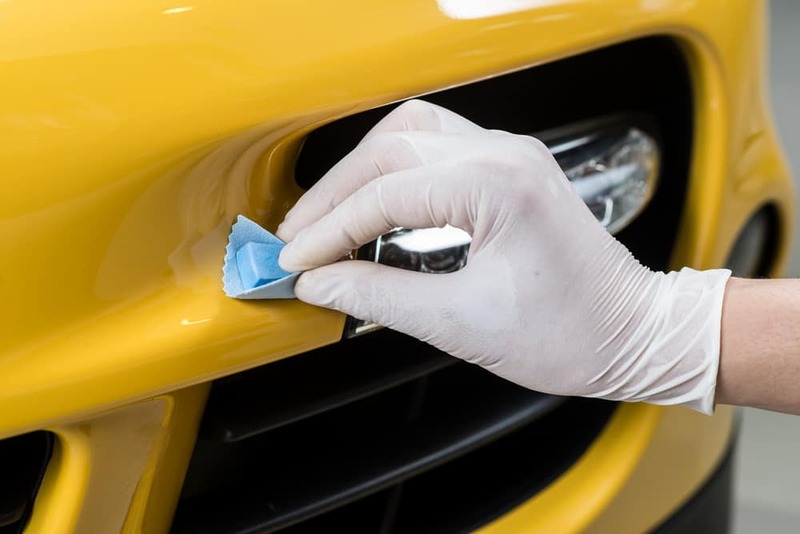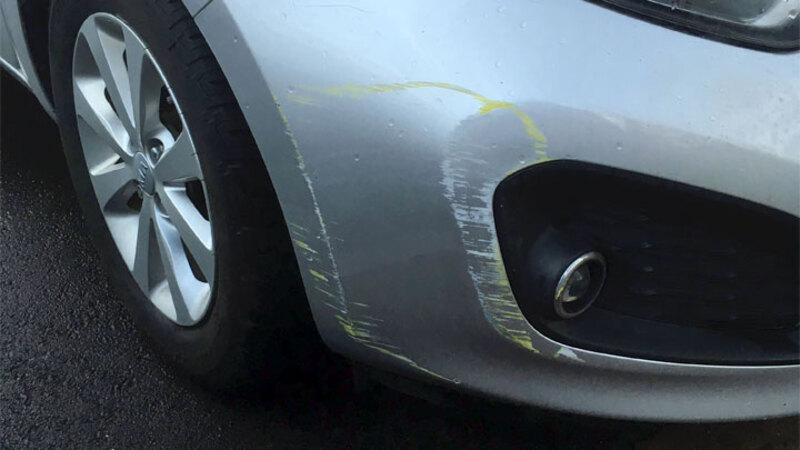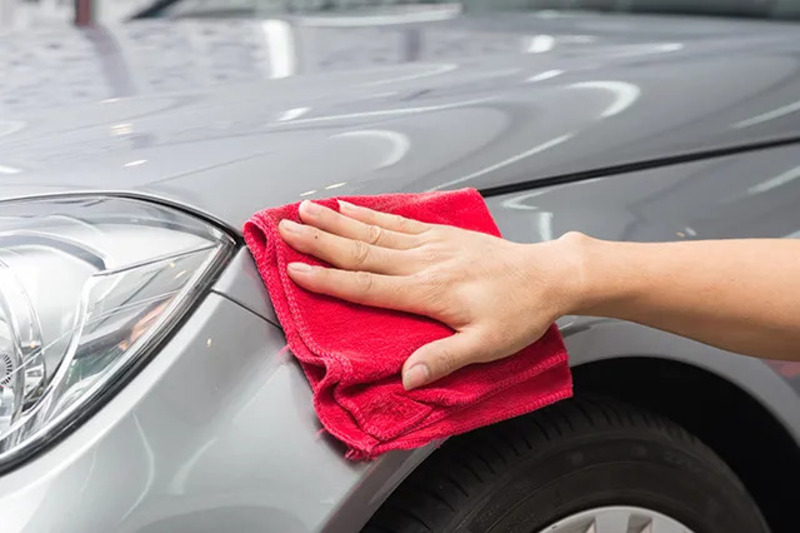There are situations where you find paint marks on your vehicle after driving through a very busy road with a lot of traffic. These paint marks are called paint scuffs, and paint transfer rubs cause them.
Whenever two different surfaces painted differently rub against each other, the paint will transfer from one surface to another.
Paint scuffs on car not only transfer paint but also leave the surfaces disfigured with scratches, destroying the great aesthetic look of the vehicle’s exterior. It can occur anytime and anywhere, irrespective of how careful the driver is when driving.
This article will examine all you need to know about maintaining your car paint and show you methods to remove paint scruffs on your vehicle.
Let’s get started!
What Makes Up The Body Paint on Your Car
Before discussing maintaining your car body paint, it is important to understand the structure of your vehicle’s paint job. When looking at your vehicle’s exterior, you see a nice color and great luster; however, many underlying layers help produce this breathtaking beauty that you see on the top layer.
Your car body paint is divided into three layers, including the wax layer, primer layer, and clear coat layer.
Wax Layer
The wax layer is the thinnest of all the layers on the car body paint, which helps improve the luster and smoothness of the car’s body paint. The wax layer is the easiest to put on a car’s paint; anyone can do it without technical knowledge.
Primer Layer
The primer layer is thicker than the wax layer. Its function is to cover the car body panel, providing the car with its unique color. Anyone cannot put on the primer layer; technical knowledge and skills are needed to apply this layer.

Clear Coat Layer
The clear coat layer is the thickest layer among all layers of your car’s body paint, and its function is to provide a shiny luster for the color given to the vehicle’s panel by the primer layer. It also performs a secondary function of protecting the primer layer from damage or rust.
The summation of these three layers provides the final results of your car’s body paint, and for paint scruffs or paint transfer to happen, a certain degree of pressure must be applied to these surfaces.
Now we understand the car’s body paint structure, removing paint transfers or scruffs from a damaged car body paint becomes easier. However, if you do not have enough time or confidence to pull it off, it is still advisable to hire the services of an expert, but remember that doing the procedure on your own will save cost.
Also Read: What to Use Instead of Car Wash Soap? (11 Alternatives)
What You’ll Need to Remove the Paint Scuffs on Car
Removing paint scuffs is only possible when the damage, scratch, or paint transfer does not go beyond the clear coat layer. Whenever any damage or scratch goes by on the clear coat layer, the vehicle panel must be repainted to bring it back to its formal status.
Removing paint scuffs will require a process, materials, and a person with the necessary skills to carry out the procedure.
Here are the materials needed to remove paint scuffs or paint transfer:
You Will Need Protective Gears
No work can be done on your automobile without personal protective equipment, which ensures your safety and reduces the risk of accidents.
Most substances to be used in fixing paint transfer and scruff irritate the eye and hands; therefore, essential protective equipment in your work environment includes gloves, eyeglasses, aprons, and safety boots.
Cleaning Products
You also need a cleaning product, preferably a car wash soap, which will not react with the paint on the vehicle’s body. Clay bar, however, is the best option when dealing with microscopic contaminants on the body of the car paint. Finally, A pressure washer can also be used for surfaces with grime, as this would produce a much better result.
Have Car Polish Available
It would be best to have car polish to ensure the affected area regains its original shiny form after removing the paint transfer and scruff. The final puzzle in returning your vehicle to its former glory is the car polish.
Many car polishes are on the market, but some are more quality than others. Some work better in shaded areas, while others work better under direct sunlight.
Choosing a car polish that will leave little or no residue and be safe for your car’s paint in every weather condition is always advisable.
Rubbing Compounds
Rubbing compound must not be applied using your hands and will need a machine.
Rubbing compounds become vital when handling severe damage to the car’s body paint. Once the paint transfer and scruff affect the clear coat layer, almost reaching the primer layer, you must use a rubbing compound.
A Cloth
Using your bare hands while working on your vehicle’s exterior panel will be improper. For this reason, cloth is needed, and the best material to be used is a microfiber towel or cotton wool alternatively.
The clothes must be free of dirt or stains.
Some Scrubbing Compounds
Scrubbing compounds are also very useful when dealing with paint transfers or paint scruff; the only problem is that too many alternatives exist.
However, recommended scrubbing compounds include WD-40 cleaner and a unique whitening paste. These scrubbing compounds can clear regions caused by scratches and make surfaces smooth again.
Using the right stropping compound makes the whole paint scuff removal process efficient and less stressful.
A great criterion for choosing scrubbing compounds is the application mode. Some scrubbing compounds can only be applied with hand machines or both. Nevertheless, sandpapers can support the scrubbing compounds if the scruff or scratch is severe. In most cases, the sandpaper is usually the finest grit size.
Some scrubbing compounds also come with wax or Polish, which are best suited to be applied over areas where these scrubbing compounds have been used.
Vehicle Wax
Vehicle wax is a material that is needed at the final stages of fixing a paint transfer or scruff problem. Vehicle access is applied once you have used other materials to work on the paint scruff. The divisibility of the pink crop should have diminished greatly before applying the vehicle to enhance the look of the vehicle’s exterior. You must be extremely careful when choosing the vehicle wax to use on your car, as most do not maintain your car’s past original look.
Applicator Pads
Applicator pads perform the same functions as clothes in removing paint crops from the body of a car’s paint; however, these applicator pads produce greater results and are easy to handle.
There are two types of applicator pads, which are the foam-based applicator pads and the microfiber-based applicator pads, but the best choice for handling the removal of a paint scruff is the foam-based applicator pad.

Follow These Steps to Eliminate Paint Scuffs On Car
Here are simple steps to guide you on how to eliminate paint scuffs on car.
Clean the Area to Be Treated: Use your cleaning material to wash and clean the affected area and ensure that no contaminants, dirt, or grime is left behind, then ensure to dry the affected area.
Removal of Scratch: If the affected area surface is too rough, it will be wise to use sandpaper to smoothen the scratch.
Next, rub some scrubbing compounds, preferably WD-40, on a sponge dipped in warm water to scrub the affected area. Finally, use a whitening paste and wet clothes to apply the place, continually rubbing it on the affected area in a preferably circular motion.
Polishing: Polish the affected area in a round motion while following the manufacturer’s instructions.
Apply Wax: Next, apply wax on the affected area in a gentle manner, following the manufacturer’s instructions.
Also Read: Vinegar On Car Paint (Everything to Know)
Frequently Asked Questions – Paint Scuffs On Car
What causes car paint scuffs?
How do you fix paint scuffs on a car?
How much does it cost to buff out a scuff on a car?
Conclusion – Paint Scuffs On Car
Paint transfer and scruff can be annoying. However, it is an easy problem to fix, and the materials needed are not that expensive. The materials needed to carry out the procedure are available at local stores, and from the guidelines above, you can save labor costs by doing it yourself. However, if the damage is severe, it is advisable to seek professional help.

